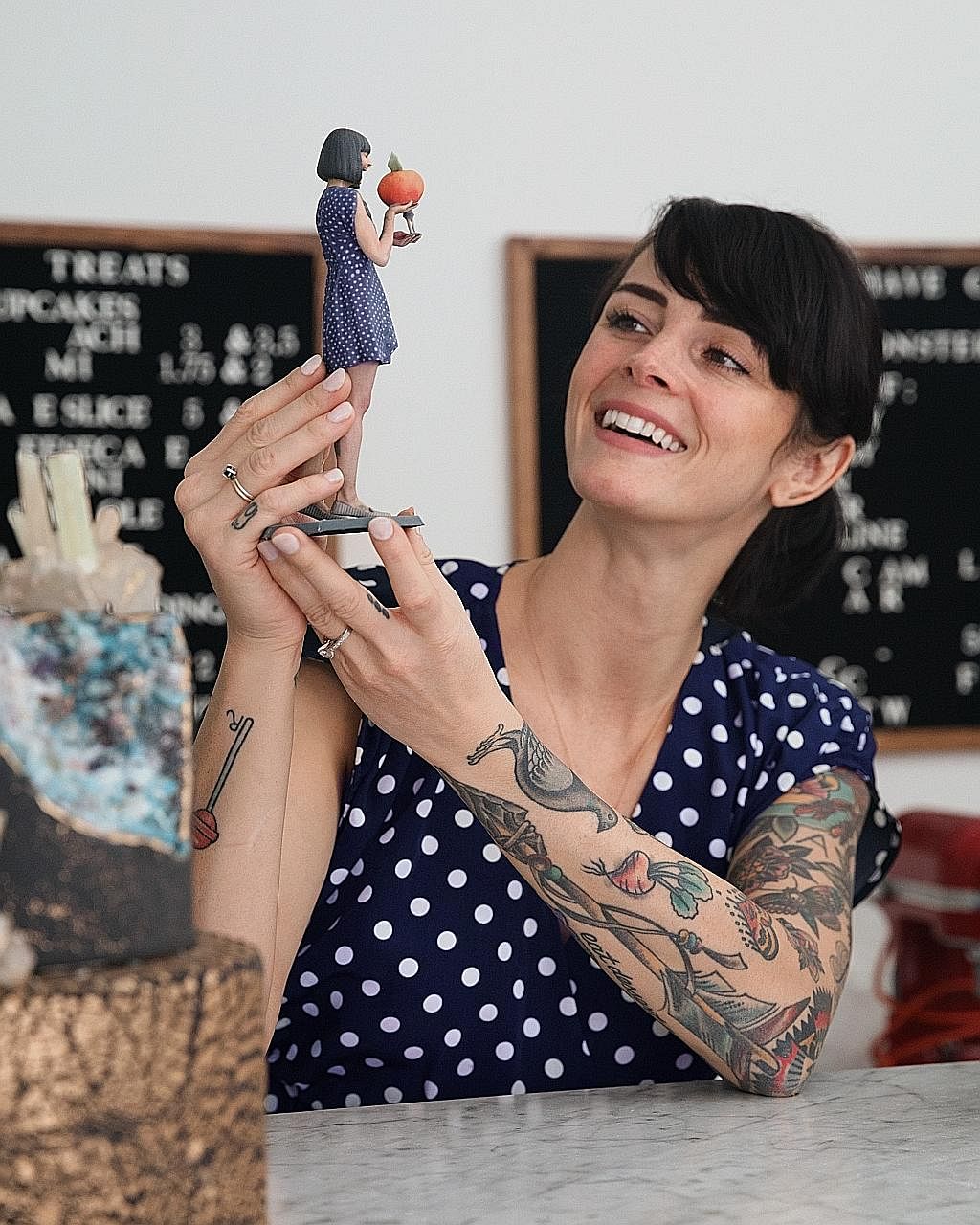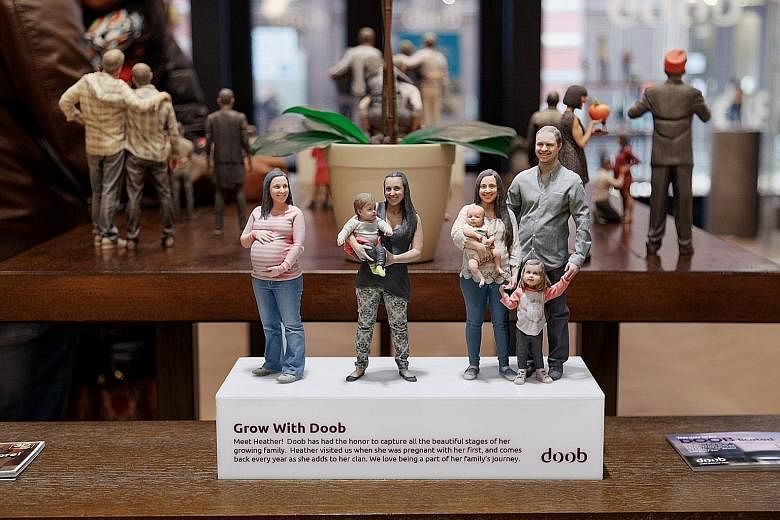NEW YORK•Last year Kim Phan, a clothing designer in Manhattan, decided she wanted a miniature version of herself.
She wore a print dress from her label, Yumi Kim, and proceeded to a branch of Doob, where she stepped into a walled room - the "Dooblicator" - fitted with 54 cameras.
The cameras captured her from every angle and then she stepped out and reviewed the image on a monitor.
"I wanted it to be a motion shot," she said. "I told them, 'I want you to capture my dress flying.'"
Using a process called photogrammetry, a technology also employed by the film and video game industry, Doob converted the two-dimensional image of her into a high-resolution 3D file. Then, through 3D printing, a resin polymer figurine is produced.
Phan was immensely pleased with the result. "You're able to have your own real-life Barbie," she said. "It's actually you."
Later, she returned with her fiance and had a figurine made of herself jumping onto his back, which she keeps on her desk at home.

You can also see copies of her figurines at a Doob store in SoHo (there is another branch on the Upper East Side, and stores in Los Angeles, San Francisco and elsewhere), along with dozens of other samples, ranging in size from 10cm tall (the Buddy, US$95 or S$126) to 36cm tall (the Diva, US$695).
How else to describe a Lilliputian rendition of a photograph that is so realistically detailed, one subject called it "creepily accurate"? A personal action figure? Mini-Me, like the character in the Austin Powers movies?
"People use the term '3D selfie' a lot. It really isn't that," said Mr Michael Anderson, chief executive of Doob USA. "We refer to them as 3D-printed replicas."
Doob, which was founded five years ago and whose headquarters are in Dusseldorf, Germany, is betting big that people want to see themselves made small: smiling alone; hugging their spouses in an eerily perfected version of the old wedding-cake topper; astride a Harley-Davidson, tattooed arms naked to the wind. Whether you consider them cute or creepy, they are perhaps the most currently relatable example of the much buzzed-about, yet perplexing, 3D printing.
To visit the SoHo store and be in the presence of so many real New Yorkers looking exactly like they do on the city's streets, only shrunken and displayed on tables and shelves, is, initially, surreal.
You have stepped into some version of the new Alexander Payne movie, Downsizing, or that old Lily Tomlin-Charles Grodin flick, The Incredible Shrinking Woman.
One 25cm figurine of a man dressed fashionably in a tan blazer, scarf and black-frame architect's glasses, his dog lying obediently at his feet, was so lifelike that it captures his expression of self-satisfaction.
"All that detail is integral," Mr Anderson said. "If it's you, but it's small and blurry, it's just a trinket. But sometimes, on the larger figures, you can see the time on a person's watch."
The more thought given to one's appearance before the doobing process, the better the results, generally. Patterns and contrasting colours show up well, for instance. And a good pose can capture the inner you.
One family gathered three generations together for a group doob. A musician stood knees bent, blowing his horn. Then there is the bodybuilder who took his shirt off, showing his waxed six-pack abs.
Ms Heather Stern first got doobed in 2014, when she was eight months pregnant with her daughter Rosie. She has celebrated Rosie's birthday every year since by getting doobed together. The naturalistic figures have made her think about "the toys we give to our daughters", Ms Stern said, like American Girl dolls. "For your daughter to have an image of a normal female body is a positive thing," she said.
But what to do with a doob? They are not sturdy enough to play with. Displaying them in your house or office may seem narcissistic. Ms Stern keeps her doobs on a bookshelf at home with the Legos she builds (she is a mechanical engineer), though "it's not like a centrepiece of the house", she said.
She added: "People are shocked by it: 'Oh my God, that's amazing, what is it?'"
NYTIMES

